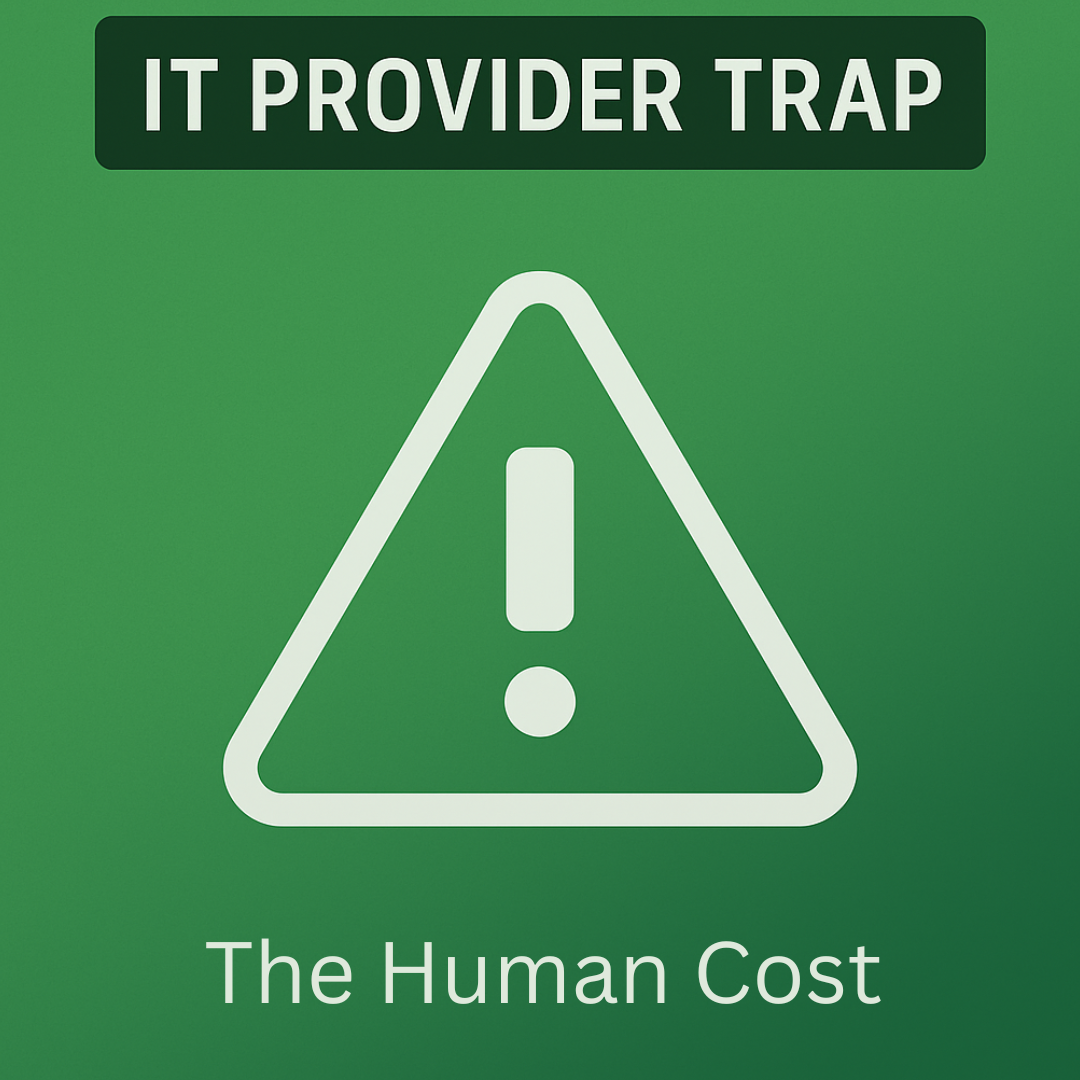IT support isn’t just a ticket queue—it’s the experience your team has with technology every day. When that experience is slow, dismissive, or inconsistent, the real damage shows up in people and process long before it shows up on a balance sheet.
1) Morale takes the first hit
Getting talked down to is the fastest way to make people stop calling. The tone says “user error,” not “let’s fix it.” After a few rounds of that—plus delays, jargon, and the blame shuffle—folks just stop asking. They avoid new tools, wait until something is on fire, and accept friction as “how it is.” That’s not stubbornness; it’s self-preservation.
2) Work gets stuck
When issues don’t get touched quickly, work queues up. Tasks wait on a fix, handoffs stall, and people context-switch to something else. By the time the ticket moves, the team has to reacquire context and redo steps. Small pauses become missed windows and extra labor—not because the problem was hard, but because it sat.
3) Shadow IT fills the gap
When help isn’t helpful, teams find their own solutions. Personal cloud drives, rogue SaaS accounts, unapproved chat tools—anything to move the work. Data ends up scattered and access is uncontrolled. Now you’ve got information that isn’t backed up, access you can’t manage, and security/compliance risk you didn’t plan on.
4) What your team hears
If your provider says “not our system,” leaves thin notes, or closes tickets that aren’t actually fixed, your staff hears: your problem isn’t important. The result is predictable: fewer tickets, more side channels and escalations, and a steady drip of frustration. Over time, trust drops and you spend leadership cycles chasing status instead of moving the business.
Quick self-check: are you paying the human tax?
- People ask a coworker before they contact IT
- Teams keep their own lists of workarounds
- You spot unapproved tools or personal file shares in the workflow
- Repeat issues reopen every few weeks
- Staff escalate to leadership to get basic issues handled
If two or more hit, the support experience is costing you more than the ticket count suggests.
Want the full checklist of red flags (and how to avoid them)? Grab the white paper:
The IT Provider Trap – How to Spot Danger Signs Before Your Business Pays the Price
